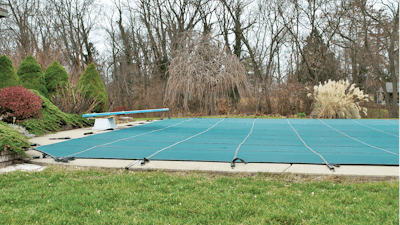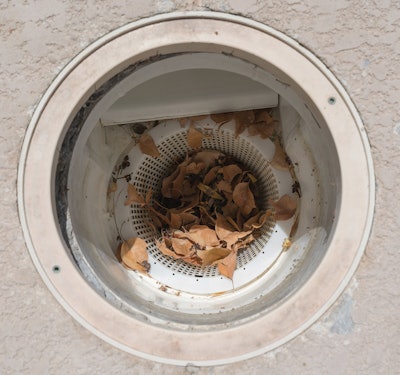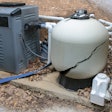
Whether you've opened 10 or 10,000 pools over the span of your career, it never hurts to brush up on the basics after a long winter season. With spring around the corner, we offer some key advice for pool startups, courtesy of industry veterans Ed Cohen and Bob Russell.
GETTING STARTED
Preparation is key — and there are plenty of ways to set a job up for success before hitting the road.
“Opening up pools starts with the office, and proper communication between you and the customer,” says Russell, CSP at Glen Gate Company.
It’s as simple as calling ahead to verify the following:
- Make sure you'll have access to equipment.
- Check that outside water and electricity is turned on.
- Ask about, and come prepared for, any debris or water on top of the cover.
- Plan ahead to have lawn furniture moved, if necessary.
- Confirm a payment method with the customer.
Lastly, before heading out, use a “load up” list to make sure you have a minimum amount of parts on board to prevent a go-back later on.
COVER CLEANUP
Upon arrival, check the pool water level before tackling anything else. “If it’s below operational level, the hose should be the first thing you put into the pool,” advises Cohen, a partner at Ultimate in Pool Care.
If the winterizing cover has accumulated some debris or standing water, make sure you capture it instead of allowing it to fall into the pool — that just means more work later on. Shift all of the debris and standing water to one area of the cover and pump it off. Be careful not to use any metal brushes during this process to prevent fabric tears.
Untether the cover from its anchoring system and carefully fold or roll it off of the pool surface. (If you’re working with an automatic cover, follow what the manufacturer recommends for removal to eliminate any uncertainties.) Lastly, take care and consideration with your cover storage: A thorough job now means less wear and tear to deal with when winter rolls around.
 Of course you’re cleaning out last winter’s debris, but also look for loose screws and worn components for replacement.
Of course you’re cleaning out last winter’s debris, but also look for loose screws and worn components for replacement.
SKIM AND BEAR IT
Before firing up the automatic pool cleaner, stretch the hose out on the deck for a bit. “In storage, the hose creates a memory from being rolled up,” Cohen explains. “If you start cleaning right away, it’ll just spin around in circles.”
While you wait, take the opportunity to do a manual clean. “If you use the automatic pool cleaner right away, the sediment at the bottom of the pool will turn into a cloud,” warns Cohen.
As you reconnect the system and move through the startup process, don’t forget to check on the essentials:
- Skimmer baskets and filter media. Rinse them out and replace any damaged or worn components.
- Winter plugs. After removal, Russell recommends storing these in a small parts bag for next season.
- Weirs, o-rings and gaskets. Make sure they’re in place and in good condition.
- Lighting. Test out all pool lights to make sure they’re functioning properly.
If you run into any confusion or uncertainties, don’t hesitate to go by the book. “Always have manuals in your trucks for heaters, pumps and other equipment,” says Russell. “There’s no shame in pulling out the manual to troubleshoot. It doesn’t matter if the client sees you — you’ll look like a pro.”
That said, troubleshooting is easier with a fluency in water flowage. “Teach your team how to read plumbing lines — it makes it easier to pinpoint certain problems,” says Russell.
When all is said and done, it’s a good rule of thumb to fill out necessary paperwork before leaving the property — not when you get back into the office.
HANDLING HEATERS
After a tough winter, you might return to find a heater damaged by mice or other critters. Use a mirror underneath the equipment to safely check for nests or debris, and remove as necessary.
“Then, close the holes,” Russell says. “Don’t put out a welcome mat for critters.”
Mice like to chew wires because they’re manufactured with vegetable oil. To keep them out, Russell recommends a synthetic coyote urine or some WD40.
COVER YOUR BASES
As a professional, it’s extremely important to keep safety top of mind — for your sake, and the sake of your customers. Before the first swim of the season, “have the safety talk,” says Russell. Encourage homeowners to review pool rules with their children and guests.
“Technicians are increasingly being hit with punitive damages,” warns Russell. Take the time to test and check components such as slides, diving boards, ladders and railings.
As it stands, the last professional to touch a diving board or even measure the envelope can be held responsible for incidents. Familiarize yourself with local health and safety codes regarding diving board use, dimensions and placement. Before reinstalling the board, double check the envelope and inspect the fulcrum, pad, bolts and hardware, keeping an eye out for cracks and rust.
“Very few clients will be mad at you for pointing out a safety issue,” says Russell. If you determine that a board, slide or other element is unsafe, and the customer resists replacement or repair, document the situation and send them a certified letter.
Most importantly, inspect the suction outlet grates for compliance: They must be properly secured, undamaged and up-to-date.
“If a grate’s loose, broken or missing, let the client know it must be fixed. It’s part of your responsibility, every time you go to the house, to check that it’s safe and secure,” says Cohen.
In general, “just be observant. Learn to recognize something that’s dangerous,” says Russell. “Remember: You know things that the homeowner doesn’t know.”
This article first appeared in the April 2022 issue of AQUA Magazine — the top resource for retailers, builders and service pros in the pool and spa industry. Subscriptions to the print magazine are free to all industry professionals. Click here to subscribe.





































